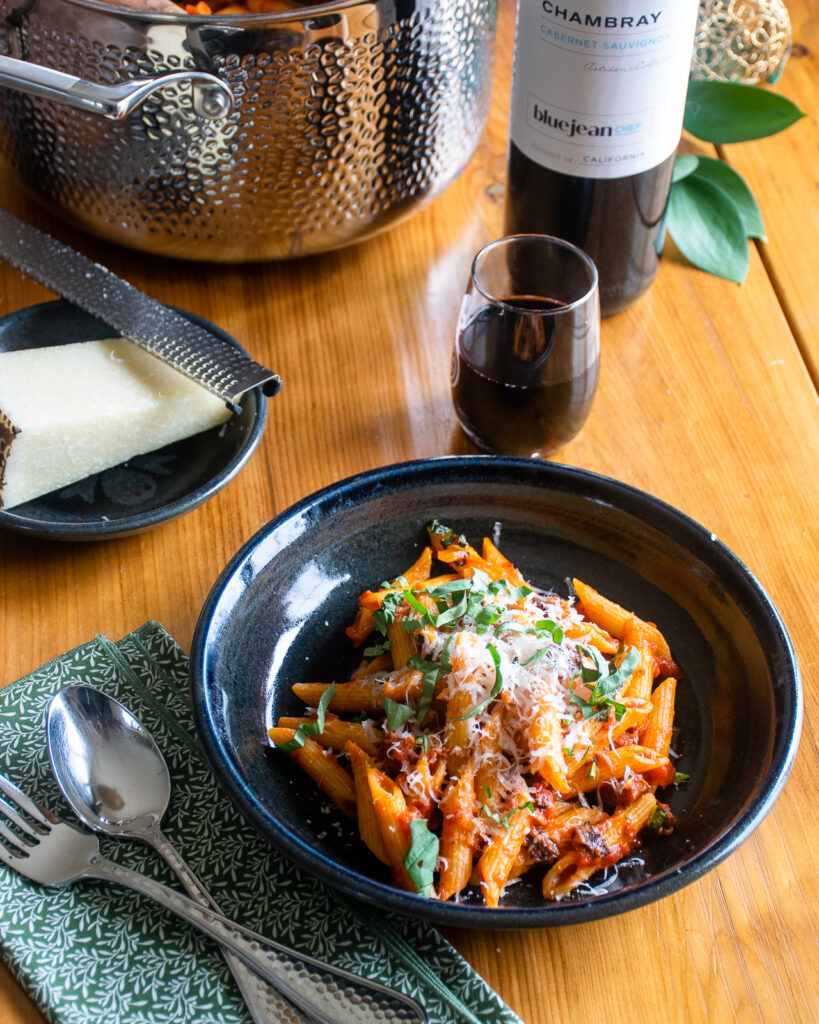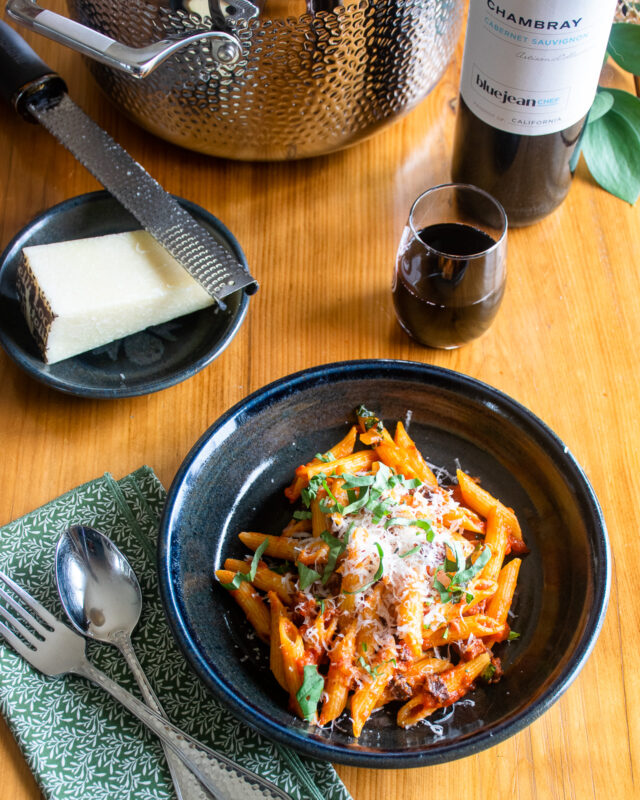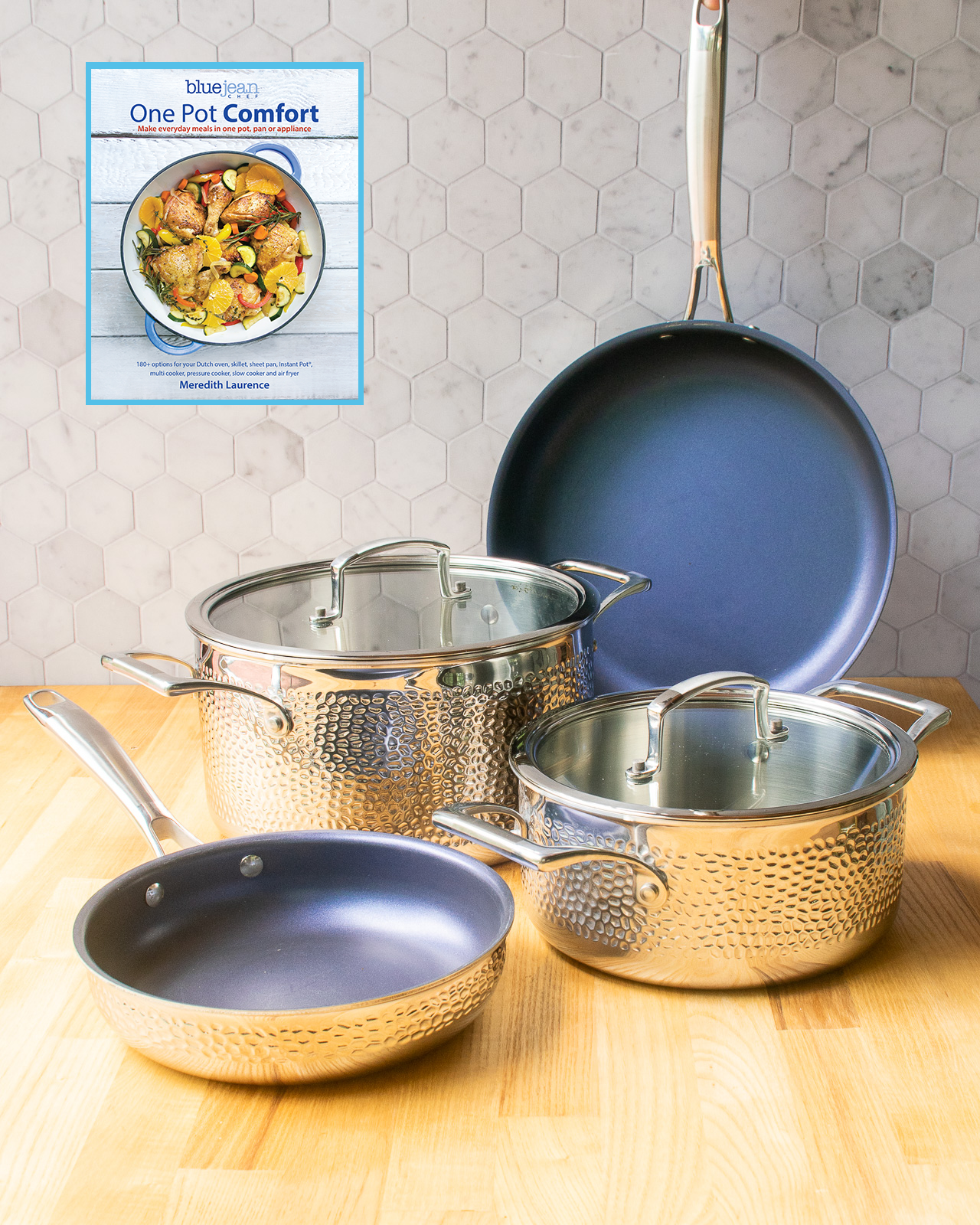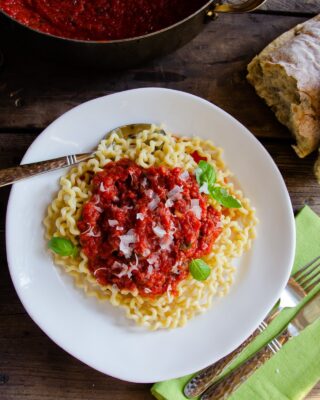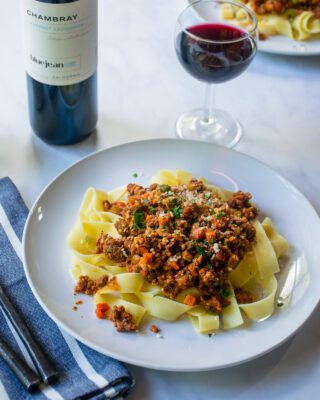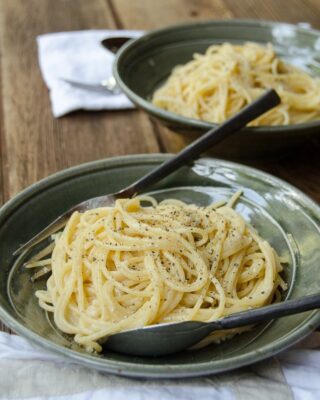
What is Pasta Amatriciana?
Pasta Amatriciana is literally a Roman pasta sauce named after the town of Amatrice, a town a few hours northeast of Rome. It’s a delicious, easy, quick pasta sauce that can be one of the most fulfilling weeknight pasta dishes you can make, and you may very well have most, if not all, the ingredients in your kitchen right now.
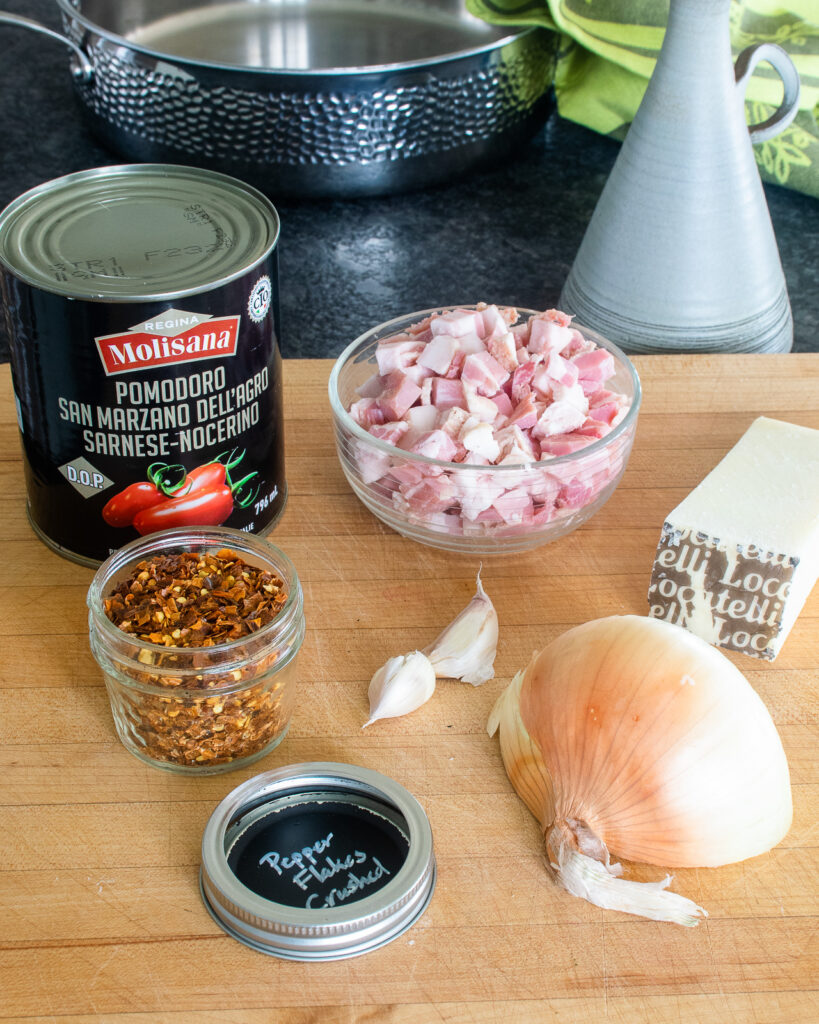
Pasta Amatriciana Ingredients
Let’s back up a little. There are four classic Roman pasta dishes: Cacio e Pepe, Gricia, Carbonara, and Amatriciana. What all of these sauces have in common is Pecorino-Romano cheese. Cacio e Pepe is the simplest of these pasta sauces, made with Pecorino and Parmesan cheeses, butter and lots of black pepper. Gricia takes Cacio e Pepe one step up by including guanciale (cured pork jowl). Pasta carbonara is basically Gricia with egg added to thicken the sauce, and Amatriciana is Gricia with tomato added. This recipe for Amatriciana includes onion and garlic (sacreligious to many!), pancetta (instead of the hard-to-find guanciale), red chili pepper flake, tomato and Pecorino-Romano cheese.
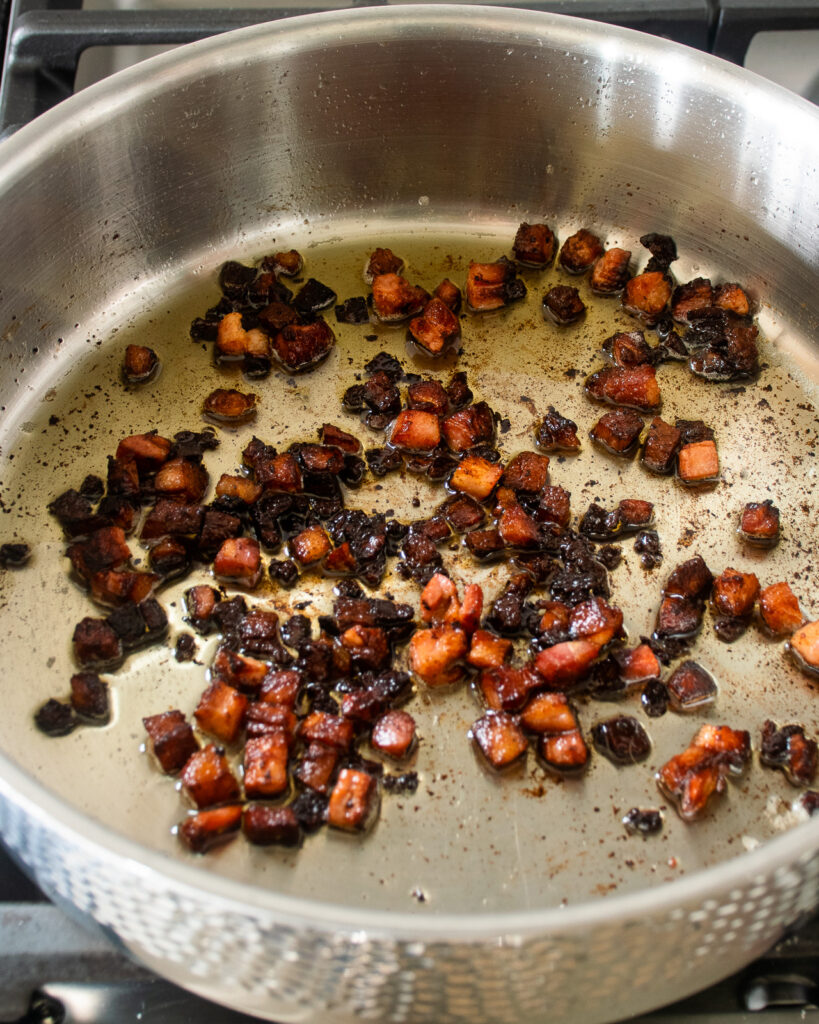
Guanciale versus Pancetta
Guanciale is a cured pork product. It is made of pork jowl that is cured and sold in a slab or sometimes rolled. Pancetta is similar to Guanciale in that it is cured, but it is made with pork belly. The main difference between the two is the ratio of fat to muscle. Guanciale is more fatty and less meaty. If you are lucky enough to find Guanciale, use it in this recipe, but omit the olive oil called for at the beginning. Pancetta is much more readily available in North America and is a good substitute in this recipe. If you can’t find either guanciale nor pancetta, use some bacon (cure and smoked pork belly). That will give the pasta sauce an untraditional smoky flavor, but it won’t hurt your feelings if you don’t let it.

How to Make Amatriciana Sauce
Traditionally, Amatriciana sauce would not include onion and garlic, so it’s entirely up to you to decide if you’d like to add it. I only crush the garlic cloves so that they lend just a gentle flavor to the sauce and can be removed before serving. Sweat the onion and garlic in the pork fat until tender, adding the crushed chili flake in for a minute or two before adding the tomato.

Crush Tomatoes by Hand
Here’s the step that you’ll complain about. In this recipe, I ask you to use a can of whole tomatoes and to crush them by hand. Don’t roll your eyes – it’s not a big deal. Just dump the tomatoes into a bowl and squeeze them through your fingers to break them down. Think of it as theraputic. Here’s why I want you to hand-crush the tomatoes. You want the tomato to be in pieces, but pieces that melt and are irregular in shape. If you add diced tomatoes, those tomatoes have been treated in a way that they hold their diced shape when cooked. They won’t break down in the same way that hand-crushed tomatoes will. Also, I find that canned whole tomatoes taste better than their diced counterparts – perhaps just because there is less processing. Just do it.
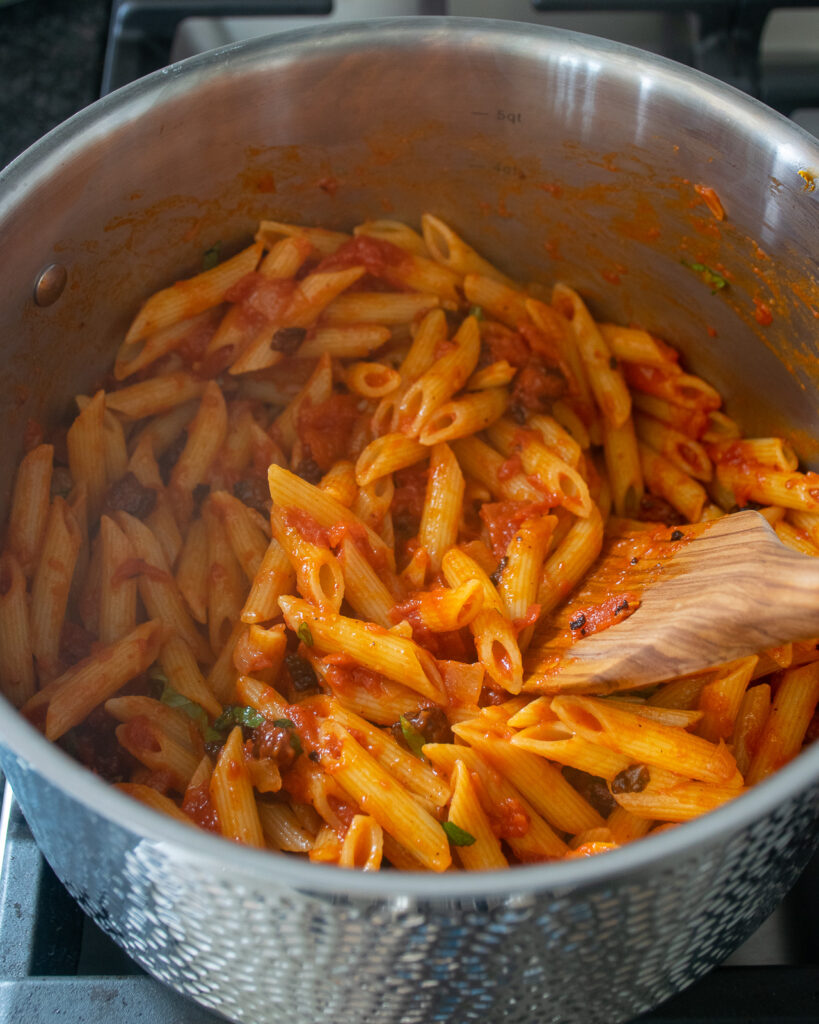
Penne Amatriciana
Traditionally, Amatriciana is served on bucatini or spaghetti, but there’s no reason why you can’t use your favorite pasta shape for this dish. Use whatever shape pasta you like but combine it with the sauce before serving (rather than spooning the sauce over the top). Add the pancetta back, along with some basil or parsley and spoon the sauced pasta into dishes. Grate the Pecorino-Romano cheese on top. You could use Parmesan cheese if you don’t have Pecorino, but at least try to find the classic Roman cheese. It’s softer and creamier than the drier, sharper Parmesan cheese. Small details sometimes made a big difference. In the same way, this quick and simple pasta dish can make a big difference to your week of meals. Enjoy!
